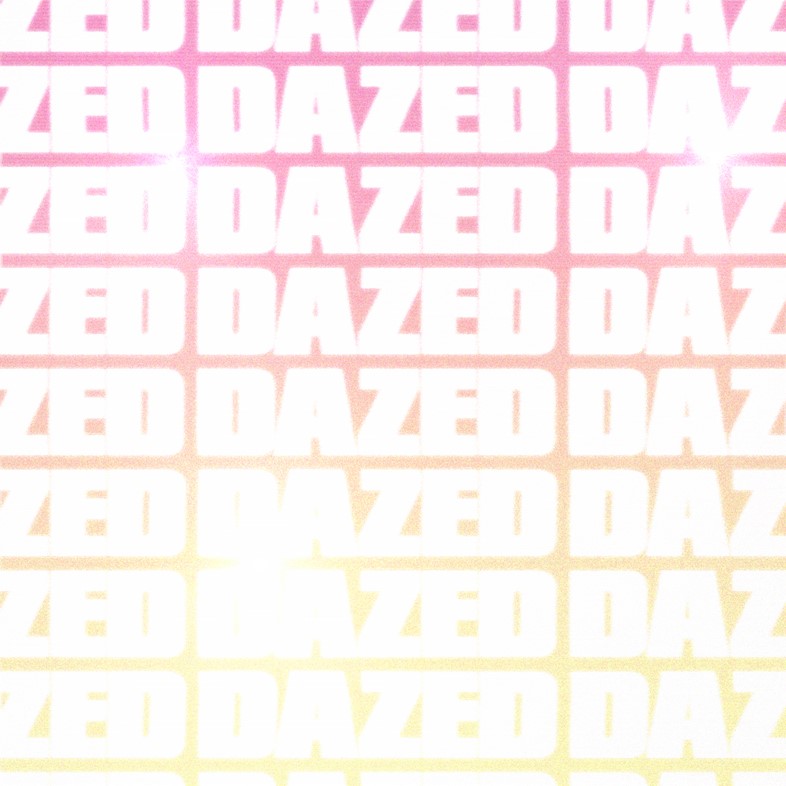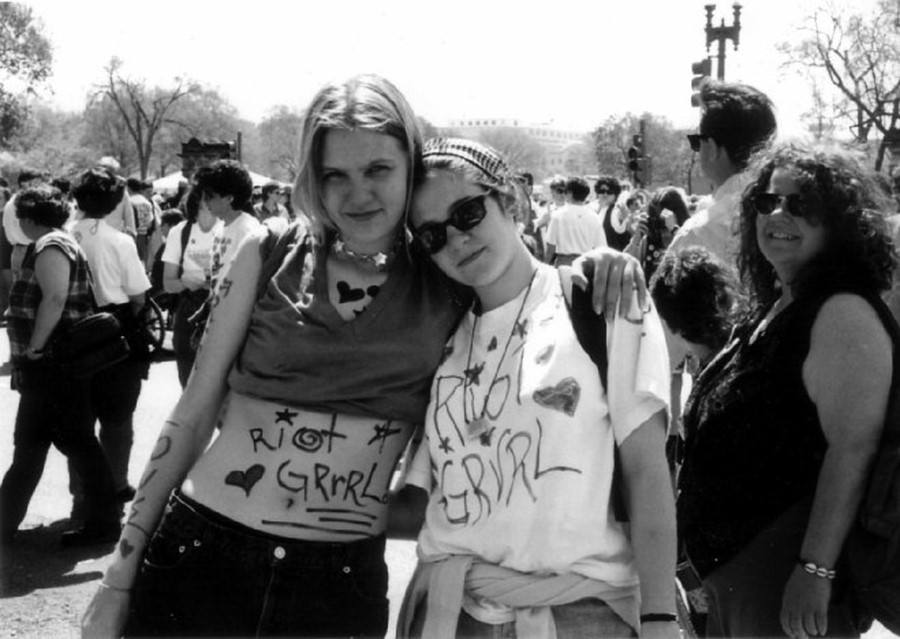From literature to activism, the ideals of the 90s feminist movement are being harnessed and revised for 2019
Culturally, 2019 is off to a good start, and that partly seems to be because of a sudden resurgence of the early 90s. We have a new Sleater Kinney album on its way (produced by St. Vincent – Sleater Kinney are living proof that lesbians win at positive-relationships-with-exes) and tour dates from Bikini Kill. Riot grrrl counterculture is alive and well, and bringing punk ideals to the mainstream.
The riot grrrl movement originated out of the US’s Pacific Northwest punk scene. In a mostly male-dominated environment, women were not only pushed out, but made to feel unsafe, and so formed their own bands to confront the problem. They continued the anti-consumerist ethics of punk, but with a more feminist agenda, creating safer spaces for women and LGBTQ people. Think Bikini Kill and Sleater Kinney, but also Bratmobile and Babes in Toyland. Riot grrrl became a way to put across ideas as well as giving women who had been sidelined a creative outlet. By putting on their own gigs and distributing zines and leaflets, riot grrrls were creating a network of activists. But the movement in the early 90s wasn’t without pitfalls – playlists were overwhelmingly white, a situation acknowledged by Heavens to Betsy’s White Girl, but that’s slowly changing with a new wave of musicians, writers, and artists. The ferocious sounds of black feminist punk band Big Joanie, Irish garage punk trio Sissy, and the acerbic Skinny Girl Diet are its soundtrack.
This spring, Picador will publish Andrea Lawlor’s debut novel Paul Takes The Form Of A Mortal Girl in the UK. Written by a genderqueer author, it’s best described as “90s punk Orlando”. Paul Polydoris can change his body at will; beef up his muscles to become more masculine, or shrink his genitals into a female form. He can change his voice, face, hair to be whoever he wants to be, on an immediate basis. There are graphic depictions of Paul’s sexual encounters sandwiched between critical gender theory discussions and mixtapes he makes for his crush. The book is a pretty wild ride, but the very existence of Paul makes an interesting point. Why is it that we’ve become so interested in bringing back this particular strain of counterculture?

Punk in 2019 is about the feeling that if there isn’t space for you, you can make it yourself. No one needs to give you permission, and if that’s something you’re waiting for, you’ll be unlikely to get it. It’s about educating yourself about women, trans and nonbinary people, and people of colour, and about giving those people a voice and a platform. It’s important, too, to notice that social media is a game-changer this time around. Being available online means that zines have more reach, and activism can be viewed on a much larger scale. MerfemmeDistro uses Etsy to distribute “zines from queer folx” for immediate digital download, while ROOT-ed, for creatives of colour in the north west of England, offers membership plans for readers and contributors. Counterculture “art critic baby gods” Zarina Muhammad and Gabrielle De La Puente are championing exhibitions by women of colour in the arts world as criticism collective The White Pube, and zines like Polyester challenge the sidelining of “feminine” tastes, as well as question issues like fatphobia in cultural discourse. Platforms such as Patreon are offering new ways for people to support creative output, from zines to podcasts and album creation. Opening up activism on our socials means that it’s difficult, for instance, to play down the impact of the Women’s March when it’s right there on the screen you look at a hundred times a day.
The online activism around Ireland’s vote to repeal the eighth amendment was stunning – support for the campaign flooded Instagram and Twitter, from Ireland to more far-flung countries and the UK, where Irish women have travelled for abortions for decades. It’s also arguably easier to create intersectional spaces online – you can be more exposed to experiences outside of your own, if you choose to be. Ireland’s feminist pro-choice movement has actively campaigned to be as inclusive as possible, pushing marginalised voices of the queer, migrant, disabled, and trans people. Though it’s easy to create a bubble of people who look and think like you, it’s not difficult to find feeds to follow which might challenge and force you to grow. Everything from the youth climate change strikes to feminist anti-domestic violence group Sisters Uncut’s Tube ad-hacking highlights the galvanising era of grassroots-led direct action.
“Punk in 2019 is about the feeling that if there isn’t space for you, you can make it yourself”
It’s more apparent now that inclusivity and intersectionality are the ways forward; that change cannot only be for one demographic. We’re able to look back at previous movements and celebrate what they were while also critiquing their failings. White feminism is no longer default feminism, and cis-gendered female bodies are not the only ones needing protection.
There’s something more uniting about the culture this time around, and perhaps that’s due to the more overt political positioning of the non-cisgendered-male body. In response to the Trump administration’s plans to see gender defined as “a biological, immutable condition determined by genitalia at birth”, a move which would effectively remove official recognition of self-defining trans and nonbinary people in the US, Instagram was filled with #WontBeErased selfie posts. Bikini Kill’s Kathleen Hanna wrote that Riot Grrrl was necessary because “in every form of media we see us/myself slapped, decapitated, laughed at, objectified, raped, trivialised, pushed, ignored, stereotyped, kicked, scorned, molested, silenced, invalidated, shot, choked and killed.” Those depictions still apply. In 2019, in a political age where the bodily autonomy of women, trans, and nonbinary people is still threatened, where Hanna’s words could have been written yesterday instead of 25 years ago, having the chance to make space for ourselves where it is not seems less a vigilante action, and more an inevitable one.




